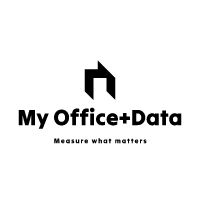Introduction In the dynamic world of business, understanding customer behavior and employee dynamics is crucial for sustainable growth and success. Amidst various metrics employed to gauge a company’s health, the churn rate stands out as a critical indicator of customer retention and employee satisfaction. This article delves into the intricacies of churn rate, exploring its definition, significance, calculation methods, and implications for both customers and employees. Demystifying Churn Rate Churn rate, also known as attrition rate or customer churn, represents the percentage of customers who cease doing business with a company within a specified period. It is commonly expressed as the proportion of subscribers who discontinue their subscriptions within a given timeframe. Additionally, churn rate can also be applied to measure the rate at which employees leave a firm within a certain period. Significance of Churn Rate Churn rate serves as a valuable benchmark for assessing a company’s ability to retain its customer base and maintain a loyal clientele. A high churn rate indicates that the company is losing customers at an alarming pace, potentially due to factors such as poor product quality, inadequate customer service, or unfavorable pricing strategies. Conversely, a low churn rate suggests that the company is effectively engaging its customers and fostering long-lasting relationships. Calculating Churn Rate Determining the churn rate involves straightforward calculations that provide insights into customer retention patterns. There are two primary methods for calculating churn rate: This method focuses on customers who have subscribed to a company’s service. The formula is as follows: This method considers all customers, regardless of whether they have subscribed to a service. The formula is as follows: Interpreting Churn Rate Understanding churn rate entails comparing it to industry benchmarks and evaluating trends over time. A high churn rate relative to industry standards may signal underlying issues that require immediate attention. Conversely, a consistently low churn rate compared to industry peers indicates a company’s strength in customer retention. Churn Rate and Customer Satisfaction Churn rate is intricately linked to customer satisfaction. A high churn rate often suggests that customers are dissatisfied with the company’s products, services, or overall experience. This dissatisfaction may stem from factors such as poor product performance, inadequate customer support, or a lack of perceived value. Churn Rate and Employee Retention Employee churn rate, also known as employee turnover, measures the rate at which employees leave a company within a specified period. A high employee churn rate can have detrimental consequences, including increased recruitment costs, loss of institutional knowledge, and disruptions to workflow. Strategies to Reduce Churn Rate Companies can implement various strategies to combat churn and foster customer and employee loyalty: Conclusion Churn rate serves as a critical metric for businesses, providing valuable insights into customer retention and employee satisfaction. By understanding and effectively managing churn rate, companies can strengthen their customer relationships, enhance employee morale. If you wanna follow the churn of your company, discover the My Office Data, a FREE SOFTWARE that allows you to register and manage all your company data, click on link bellow to register and start Link to Sign On

